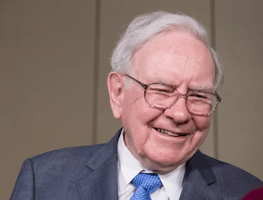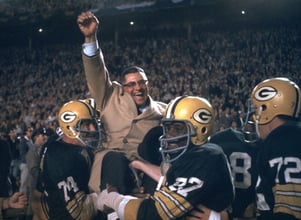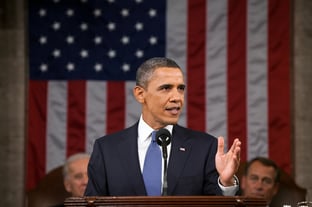
SME Strategy is a strategy consulting company that specializes in aligning teams around their vision, mission, values, goals and action plans. Learn more about how we can help you create a strategic plan and train your leadership team with our strategic planning and implementation services.
At its core, leadership is about setting a direction for an organization and its people. Anytime we deal with people, we are inevitably dealing with extreme variability. This is evident in today’s realm of leadership courses, leadership styles and leadership consultants all trying to improve the leaders of today’s businesses, schools, non-profits, teams and governments. Ultimately, it depends on the people inside an organization that will determine what style of leadership is best for them. Nonetheless, in this article I’ll try to highlight some of the benefits of each style of leadership, including some examples of well-known people who I think best embody that style.
Watch: The 6 Roles of the CEO
Autocratic Leadership
These leaders rarely take advice from others, relying only on their own intuition and judgement while maintaining complete control over their organization. Autocratic leaders are more difficult to find in the world of business today, despite showing real success in the past. This style of leadership can be extremely effective in situations where immediate action and quick decision making is necessary. Their decision making process eliminates the need for different levels of the organization to discuss and sign off before anything is done. These leaders can be highly effective when they’re the most knowledgeable among the group, and are able to figure out what’s best for the future of the organization.
However, autocratic leadership is considered an outdated leadership style these days, with younger workers valuing autonomy and less demanding bosses. An autocratic leader isn’t ideal for the most skilled and self-motivated workers. Those people will value a position where they have a say in the direction of the organization.
Example: Steve Jobs, Apple co-founder

Steve Jobs was able to create the most valuable company of all time by having a clear vision of what the company should be, as well as what the product should look and feel like. As he demonstrated time and time again, he knew what customers wanted. His brilliant vision turned his followers and employees into believers, allowing him to rule Apple with complete authority. Despite being demanding and egotistical, Jobs’ will be remembered as one of the greatest business leaders of the time.
Laissez-Faire Leadership
Laissez faire leaders intentionally remove themselves from the decision making process, placing complete trust in their employees. The leader remains in control of the direction of the organization, while letting the team beneath them choose how they want to get the job done. Typically, laissez faire leadership works well in creative companies, where people don’t need to comply with as many rules and can maintain creative control.
If the leader is too far removed there may be less perceived cohesiveness within the organization. This leadership style requires people to motivate themselves and work completely autonomously, making it ideal for certain industries and not for others. In sectors with tight deadlines and little room for error or creativity, a more hands-on leader may be ideal.
Example: Warren Buffet, Berkshire Hathaway Chairman, CEO

Besides being one of the world’s richest people, Warren Buffett is known as being one of the most savvy investors alive. His leadership style is very hands-off, as he delegates company activities and functions to trusted managers. The success of Buffett’s leadership style is owed partly to these highly competent and self-motivated staff members. Buffett is able to have complete trust that his people will make their own decisions, while he provides the guidance and resources. Apart from his yearly letter to the board, Buffet is fairly silent and allows his managers to handle accounts.
We can help you align your team around a clear vision, mission, values, goals and action plans,
so you can lead your organization more effectively and get better results.
Transformational Leadership
Transformational leaders have a clear set of values and a strong culture within their organizations, always leading by example. They motivate and inspire their followers not to work for their own rewards, but towards the success of the organization as a whole. They have the power to transform the future of an organization by encouraging innovation among their people. Traditional rules and regulations are thrown out the window in the name of growth, innovation and transformation.
Although one of the more popular leadership styles today, transformational leadership has its setbacks as well. If the leader is slightly self-serving or unethical, they can motivate and convince people to execute against the best interests of the organization. Furthermore, employees can burnout faster if they’re constantly being pushed and are not easily motivated by the leader’s style.
Example: Reed Hastings, Netflix CEO

In 1998, Reed Hastings began mailing DVDs with a business partner, and would eventually go on to develop the movie and TV streaming service we recognize today. Aside from building a disruptive and transformational business model, Hastings exhibited a transformational leadership style in many ways. He brought his own version of human resources, eliminating formal reviews and bonuses, while encouraging employees to make their own decisions- as long as they “act in Netflix’s best interests”. Focusing on people has earned Netflix a strong work culture, as well as an 88% approval rating of Hastings, the CEO, according to Glassdoor.
Motivational Leadership
Motivational leaders are common in the worlds of sport and business. These leaders are able to motivate their people to achieve things they hadn’t thought possible. They use a variety of methods to motivate their people including positive reinforcement, humour, assisting in one-on-one situations and really getting to know what motivates each one of their people on a personal level. Above all else, these leaders believe in their people and want to see them succeed.
It’s possible that some employees who are intrinsically highly motivated wouldn’t appreciate a hands-on motivational leader. These workers may prefer space and more freedom. Other members of an organization may crack from the extreme pressure of a motivational leader, which is often seen in professional sports.
Example: Vince Lombardi, NFL Coach

Vince Lombardi is one of the most famous football coaches of all time. He coached during the 1950's-60's, when the league was not nearly as established as it is now. He believed that winning was a habit that could be trained like any other skill, and he demonstrated it by winning 73% of the regular season games and 90% of the playoff games he coached. He had an authoritative personality who valued hard work and discipline.
Transactional Leadership
A transactional leader relies on a system of rewards and punishments operating within their organization, and although they use a lengthy list of rules and regulations, they’re primarily concerned with results. Often confused with transformation leaders, transactional leaders are more concerned with rewarding individual effort rather than that of the entire group. Furthermore, these leaders don’t worry about motivating their people, but instead focus on the systems and structures in place that will reward them and guide the organization. These leaders are common in the military and large, international companies that require heavy oversight and order.
Because transactional leaders are more focused on short term goals, there is less room for creativity and experimentation. Employees are there simply to do their jobs, and when they don’t there is little forgiveness. This can lead employees to experience a lack of motivation and become burnt out.
Example: Bill Gates, Microsoft founder

Bill Gates built Microsoft into the behemoth it is today by keeping a tight grip on product strategy and production, which meant creating barriers for new entrants. A highly effective leader who knows his business in and out, he didn’t need anyone telling him how to run it. Gates has a reactionary style that can execute in the short term, and he wasn’t afraid of confrontation. He believed that people could be motivated continuously by rewards and punishments, famously stating “I believe that if you show people the problems and if you show them the solutions they will be moved to act”.
Need help with your strategic planning process? A facilitator can help:
Bureaucratic Leadership
The bureaucratic leadership style is one of the oldest, responsible for the success of many entire societies and militaries, and relies on a set of strict rules and regulations to govern the organization. Unlike charismatic leaders, bureaucratic leaders are granted power through their position rather than their personality, while focusing less on individuals and more on the systems and structure of the organization. Successful organizations led by bureaucratic leaders are run efficiently and predictably, without the input of employees. Although employees don’t have a say about the operations of the organization, their specific skills are put to use, allowing them to make an impact and experience high job satisfaction.
As a downside to the bureaucratic leadership style, business functions and decisions can take much longer to reach completion, due to the layers of people and process. On top of that, when the leader takes leave for any reason, it may become more difficult for things to get done within the organization.
Example: McDonald’s

Some of McDonald’s huge success can be partly credited to their bureaucratic approach to selling hamburgers. McDonald’s is designed to be predictable, meaning your McChicken sandwich will look and taste the same regardless of whether you bought it in South Korea or South Carolina. Their franchising model is successful (36,000+ locations) because there is a strict set of rules and regulations owners must follow, which also makes it easier on them. Employees are not expected to innovate or provide operational advice, but are instead rewarded for time on the job producing hamburgers.
Charismatic Leadership
Charismatic leaders display ultimate confidence in themselves and exhibit glowing personalities that attract followers by the masses. They have a way of speaking to people that allows strangers to connect with them on an emotional level. They’re determined to find solutions for their organizations, and use their optimistic attitude to inspire their followers. Unlike bureaucratic leaders, charismatic leaders generate power from their own personality, rather than their title or position. By simply being themselves, a truly charismatic leader will get results by motivating and inspiring those around them to fulfill the organizational vision.
Charismatic leaders are often so beloved, that if they were to take time off or leave the organization completely, employees would be lost. These kinds of leaders can also have a negative effect on an organization when employees follow them blindly and do things that end up not being in the best interest of the organization.
Example: Barack Obama, 44th American President

Among many charismatic past presidents, Barack Obama is a standout leader. Born from mixed race parents, Obama would go on to be America’s first African American President. A gifted public speaker, Obama told his inspirational life story on the campaign trail, encouraging a record amount of people to come out and vote for him. During his campaign through to this day, Obama dedicated himself to social justice and progress, representing the new face of change in the western world.




